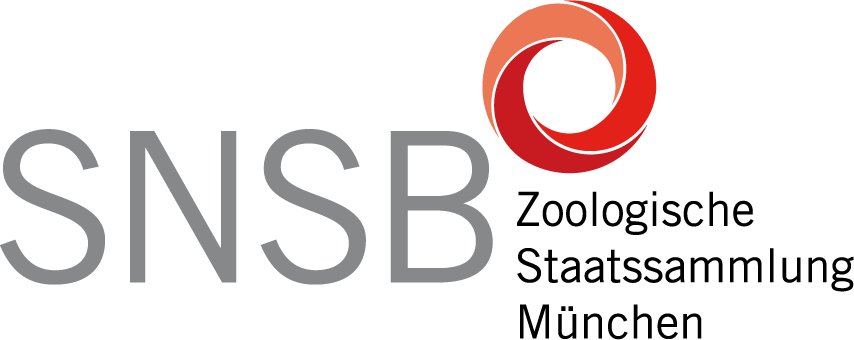History
Section Lepidoptera
Important historical data
1807: Integration of the (1) Royal Nature History Cabinet (2) the “Zweibrücker collections” and (3) “Riedel’s Cabinet” into the Academy of Sciences
1810: Acquisition of the collections Moll and Schreber
1820: Access of the zoological material collected by Ritter von Spix during the Royal Expeditions to South America
1874 –1885: Access of the collections Esper, Freyer (partim), Sturm, Gistel, Hartmann and others
1888 –1898: Two extensive research and collecting expeditions of H.H. Princess Therese of Bavaria to South America with collections of butterflies and moths
1915 –1945: Dr. Kurt von Rosen, leader of the section: Starting point of a systematic, coordinated establishment of an important scientific Lepidoptera collection. Acquisition of the collections Daumiller, Bastelberger, Disqué, Dannehl and others
1943: During the World War II main part of the collection was transferred to Ohlstadt, ca. 50 km south of Munich
1944: Destruction of parts of the collections (those exhibited to the public and thus not transferred to Ohlstadt) by bombing in Munich city
1945 –1975: Dr. Walter Forster, leader of the section: Access of important collections, such as Alberti, Eisenberger, Gehlen, Hirmer, Hörhammer, Koehler, Lukasch, Osthelder, Vogl and others
1949 –1954: Two extensive research and collecting expeditions to South America (mainly Bolivia, Dr. W. Forster)
1964: Extensive research and collecting expedition to Tansania (Dr. W. Forster)
1962 –1973: Four extensive research and collecting expeditions to Nepal (Dr. W. Dierl and other colleagues)
1975 –1996: Dr. Wolfgang Dierl, leader of the section.
1986: Translocation into the new collection building. New arrangement of the whole collection
1990: Starting point of a comprehensive, IT-based inventory of the collection (Dr. A. Hausmann, E. Lehmann, M. Sperlich)
1996 – today: Dr. Axel Hausmann, leader of the section. Access and acquisition of important collections, such as Herbulot, Beyerl, Wolfsberger, Klimesch, Hinterholzer, Eitschberger (partim), Hacker, Pröse, Behounek, Politzar, Scheuringer, and many others, more than 2,000,000 specimens. Association of collections between ZSM and museum Witt (foundation ‘Thomas Witt’, established by the Bavarian Minister for Science, 9.2.2000). Various projects granted by the German Ministry of Science, the Bavarian Ministry of Sciences, Research and the Arts, and the DFG for publication of monographs (‘The Geometrid Moths of Europe’), for inventorying of collections and www-based presentation of collection data (GBIF), for molecular research with collection material (Pyralidae: Dr. A.H. Segerer; Geometridae: Dr. A. Hausmann)
2006: Start of cooperation with the Canadian BIO (University of Guelph) to generate DNA Barcodes from the ZSM collection. By late 2011, approximately 70,000 ZSM specimens have been barcoded.
2010/2011: Donation of the Museum Thomas Witt, including > 2 Mio Bombyces and ca 1,200 holotypes.

The Bavarian Minister for Science and Art, H. Zehetmair, during his visit in the Lepidoptera collection at the inauguration of the “Thomas Witt foundation”, 9.2.2000 (with Dr. A. Hausmann).
Literature
– Balss, H. 1926. Die Zoologische Staatssammlung und das Zoologische Institut. – In: Müller, K.A. von (Hrsg.): Die wissenschaftlichen Anstalten der Ludwig-Maximilians-Universität zu München. Chronik zur Jahrhundertfeier, im Auftrag des akademischen Senats herausgegeben: 300-315.
– Dierl, W. 1979. Bemerkenswerte Schmetterlingssammlungen in der Zoologischen Staatssammlung. – Nota lepid. 2: 31-33.
– Dierl, W. & A. Hausmann 1992. Die Sektion Lepidoptera der Zoologischen Staatssammlung München. – Spixiana Suppl. 17: 101-107.


